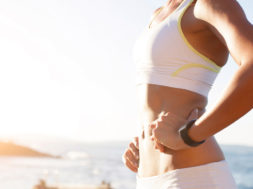Tip #1: Eat The Right Amount of Protein
The muscles of your body is where the energy you derive from your food goes. They are what moves you on the wrestling mat and allow you to do the physical things you do; your muscular system is where your metabolism lives. On a reduced calorie diet (when cutting weight), the body is forced to rely on energy stores because you’re no longer feeding it enough gas to go. This is in the form of body fat and glycogen (stored carbohydrates/sugar) in the muscle cells. When the glycogen runs out, the body turns to body fat and then protein to burn for energy. As the muscles are made of protein, if you don’t eat enough dietary protein when cutting weight, your body will turn on its own muscle tissue for food. Not only will this make you weaker and perform poorly on the mat but it also causes a type of temporary damage to your metabolism.
This is why eating protein while cutting weight is super important however not the end of the story; you must eat the correct amount to be effective. This is figured by a simple body fat test that will not only tell your percentage of body fat, but also your lean body mass. To avoid losing muscle on a reduced calorie diet, you must eat at least the same amount of protein (in grams) as your calculated lean body mass. Given the excessive amount of exercise wrestlers perform on a daily basis during training, you should also add 10-15 grams of protein (on top of your lean body mass number) to help recover and avoid overtraining. For example, a 145 lb. wrestler who has a lean body mass measurement of 138 lbs. should eat between 150-160 grams of protein per day. Once you’re gotten your protein requirement per day established, control your weight loss by manipulating the amount of carbohydrates you eat per day.
Tip #2: Front End Load Your Calories
The best way to reduce body weight and still keep performance levels high is to drop body fat and water weight, while maintaining muscle mass. After establishing the right amount of protein to eat, the best way of doing this is to reduce dietary fat to a minimum and choose only clean, natural carbohydrates as your main calorie source. The majority of your carbohydrates should be starches such as rice, sweet potatoes and oatmeal first with breads and pasta as secondary choices. Mix in fibrous carbs such as green leafy vegetables with the starches you eat in as many meals as possible. Besides breakfast, eat 1-2 servings of broccoli, brussel sprouts, asparagus or green beans at each meal. Keep in mind that corn, peas and beans can be eaten but treated as starches and should not be counted as fibrous vegetables when trying to drop weight. Fruits can be eaten, but if body fat loss is your goal, fruit should be eaten in limited quantities in the first part of the day.
For the easiest and best weight loss, stagger your calories from largest to smallest starting with the first part of your day. In other words, breakfast is the biggest meal of the day, the second meal is the next largest, the third meal is yet smaller and the fourth and fifth (if you eat that many) only consist of protein and vegetables. Staggering your calories like this turns your body into an extremely efficient machine. After a couple days of eating like this, you will become hungrier and hungrier at night and absolutely starving for breakfast – which works out well as it’s your largest meal of the day. Eating all your starches in the first half of your day will load the body with plenty of fuel for training sessions after school. Eating the fewest calories at night will leave your stomach empty before bed, preceding the 8+ hour fast your body goes through when sleeping.
Tip #3: Water Loading
Water is an essential nutrient to every wrestler. If even the slightest bit dehydrated, performance suffers. As much as wrestlers sweat in practice, they must constantly force water down to prevent dehydration. Moving water from the body is also an essential part of cutting weight, as it is mostly water weight that’s lost. If you drink very little water so the body is borderline dehydrated, it will try to hold onto the water it has rather than lose it. Conversely, if you steadily increase the amount of water you intake over a short period of time, urination will also increase to pass the water through. This is the principle used in a method called water loading. Water loading is simply loading up on drinking water 3-4 days before the weigh in and then cutting it out right before you weigh. Water loading is an effective natural diuretic method however should be done in moderation. The amount of water you build up to depends on the size of the athlete however trying to drink 3-4 gallons of water in one day is NOT a smart practice and can lead to injury. Most athletes get the best effect building up to 1-2 gallons in a day.
Here’s how it works. If you’re weighing in on Friday at 4pm, start your water load on Tuesday. On Tuesday, start increasing the amount of water you’re drinking to get at least ¾ to 1 gallon throughout the day. On Wednesday, try to drink more than a gallon of water. On Thursday, try to drink more than a gallon of water up to your last meal of the day. After your last meal on Thursday and up to the weigh in on Friday, restrict water intake to only sips when you need it. By drastically increasing the amount of water you’re drinking, this acts as a natural diuretic and the body will begin urinating much more frequently. After the water restriction on Thursday night, the body will continue to urinate as it has all week effectively dropping several pounds of water weight until weigh in. After weighing in, drink at least 16+ oz. to replenish what was lost by this process. While drinking this much water during the week, you will notice you will lose more water weight during practices as well. This method is safe and easy to do and also ensures you will not be anywhere near dehydration.





